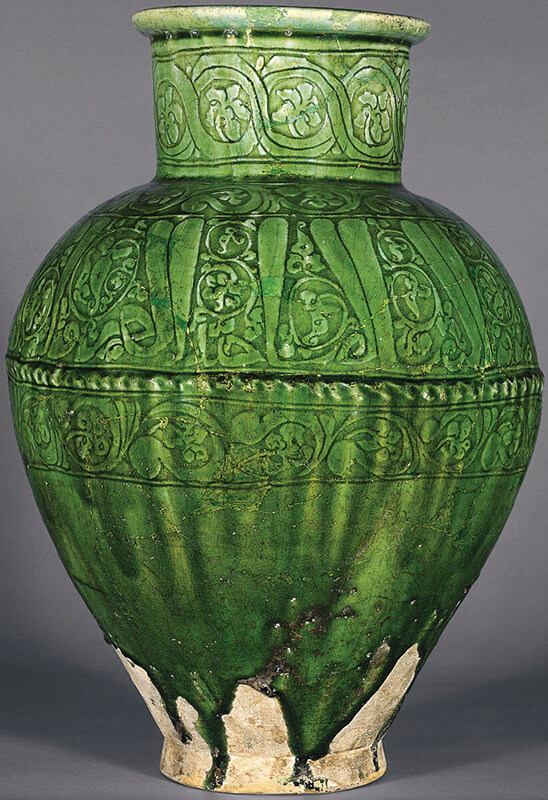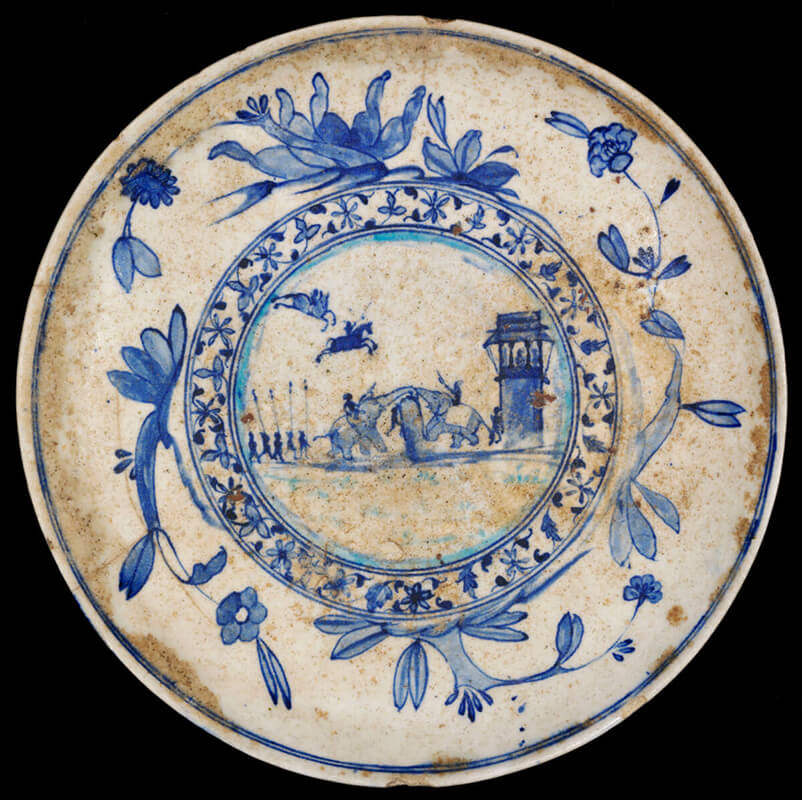LNS 219 C a,b

Two lustre tiles, probably from a shrine, inscribed with Qur’an chapter 55 (al-Rahman) vv.36-39 and chapter 34 (Saba`) vv.9-11
Kashan, Iran, second half 7th century AH/second half 13th century AD
LNS 768 C

Porcelain jar, probably produced for the domestic or foreign Islamic market, with a wide central band filled with an Islamic infinite pattern of ten-pointed stars, pentagons, and other polygons (lozenge plan of repetition, based on decagons tangent at their apexes)
LNS 515 C

Composite-bodied lustre-painted ceramic ‘tombstone’ with inscriptions in naskhi and nasta‘liq scripts, including a passage from the Qur’an (chapter 55, verses 26 and 27), an invocation of blessing on the twelve Shi‘a imams, and Persian verses giving the name and date of death of the deceased, Zayn al-‘Abidin ibn Sayyid Mir ‘Ali, and the signature of the maker, Sayyid Muhammad ibn Muzaffar
LNS 234 C

Mosaic inscriptional panel (composite bodied ceramic set into plaster), rendering part of verse 286, chapter 2 of the Qur’an, against a continuous spiralling scroll issuing palmettes and half-palmettes
LNS 350 C

Composite bodied ceramic jar with a mannered cursive inscription around the shoulder, expressing good wishes to the owner
LNS 372 C

Earthenware bowl decorated in polychrome metallic lustre-painting in radial layout, with four shield-shaped compartments each containing a schematic plant and multiple lines of pseudo-Kufic script, probably of talismanic or ‘magic’ intent
LNS 859 C

Composite-bodied ceramic dish featuring, at center an elephant fight before a royal pavilion, bordered by flowering plants in counterclockwise rotation
LNS 1084 C

Composite-bodied ceramic dish, the well with a fanciful plant with serrated leaves and a central lotus leaf
LNS 827 C

Composite-bodied ceramic dish covered with whirling floral and foliate scrolls
LNS 1060 C

Unglazed earthenware master-mould for the production of composite-bodied ceramic vessels, decorated with haloed figures wearing elaborate head-dresses, seated in arched ‘pavillions’; around the base, good wishes to the owner in naskhi script


